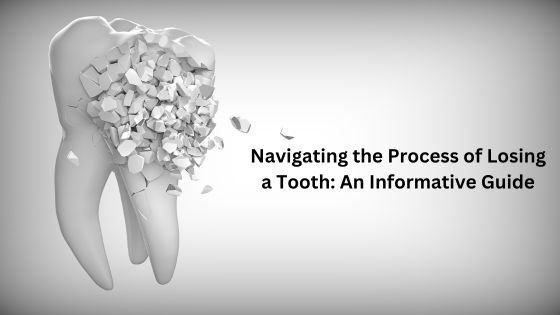Losing a tooth is a natural process that everyone goes through, be it from aging, an accident, or oral health issues. Understanding this process is crucial because it affects not only your physical appearance but also your overall health. Poor management of tooth loss can lead to complications like bone loss, shifting teeth, and changes in facial structure.

In this guide, we will take you through the process of losing a tooth and provide useful tips on how to navigate this journey smoothly.
Understanding the Anatomy of a Tooth
Before delving into the process of losing a tooth, it’s essential to understand the anatomy of a tooth. A tooth has two main parts: the crown and the root. The crown is visible, white in color, and is responsible for biting and chewing food. The root, on the other hand, is below the gumline and anchors the tooth to the jawbone.
Each tooth also has different layers: enamel, dentin, pulp, cementum, and periodontal ligament. Enamel is the hard outer layer that protects the tooth from decay. Dentin lies beneath the enamel and is softer than enamel. The pulp is the innermost layer that contains nerves, blood vessels, and connective tissues. The cementum covers the root of the tooth while the periodontal ligament attaches the tooth to the jawbone.
What Causes Tooth Loss?
There are several reasons why you may lose a tooth. Some of the common causes include aging, gum disease, tooth decay, accidents or injuries, and genetics. Whatever the cause may be, losing a tooth can have significant impacts on your dental health and overall well-being.
The Process of Losing a Tooth
The process of losing a tooth varies depending on the cause. However, the following steps generally occur:
- Damage to the Tooth: If you lose a tooth due to an accident or injury, the tooth may become loose or fall out immediately.
- Advanced Gum Disease: Untreated gum disease can weaken the gums and bones supporting your teeth. This can cause your teeth to loosen and eventually fall out.
- Tooth Decay: When tooth decay reaches the inner layers of a tooth, it can cause infection and inflammation of the pulp, leading to tooth loss.
- Root Resorption: This is a rare condition where your body’s immune system attacks the tooth root, causing it to dissolve and eventually fall out.
Managing Tooth Loss
Tooth replacement is essential for oral health and overall well-being. If you lose a tooth, here are some options to consider:
- Dental Implants: These are artificial tooth roots made of titanium that are surgically placed into the jawbone. They provide a strong foundation for replacement teeth.
- Dental Bridges: A dental bridge is a false tooth anchored between two healthy teeth to fill in the gap.
- Dentures: Dentures are removable sets of artificial teeth that can replace multiple missing teeth.
If you live in Madison and looking for tooth replacement, consult with your dentist to determine the best option for you.
Maintaining Good Oral Health After Tooth Loss
It’s essential to take proper care of your teeth, whether you have lost a tooth or not. Here are some tips for maintaining good oral health:
- Practice Good Oral Hygiene: Brush your teeth twice a day, floss regularly, and visit your dentist for regular check-ups.
- Eat a Healthy Diet: A balanced diet rich in vitamins and minerals can help strengthen your teeth and gums.
- Avoid Bad Habits: Avoid smoking and excessive alcohol consumption, as they can contribute to tooth loss and other dental health issues.
Losing a tooth may seem daunting, but with proper care and management, you can maintain good oral health and a confident smile. Remember to consult with your dentist for personalized advice on tooth replacement and maintaining good oral hygiene. With the knowledge and understanding of the process of losing a tooth, you can navigate this journey with ease.
